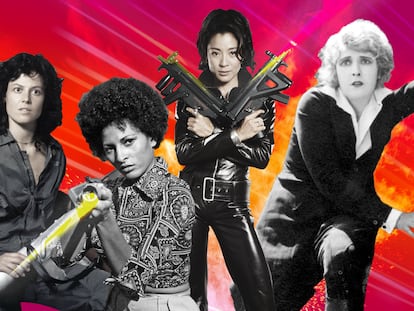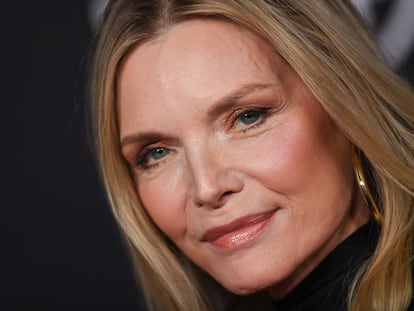Sigourney Weaver’s five decades on screen: ‘I didn’t want anyone to think, “Oh, she’s old, she can’t do this”’
One of Hollywood’s most active 70-plus actresses, ‘Master Gardener’ is her most recent film. Nobody has ever announced her comeback because she’s never left in the first place
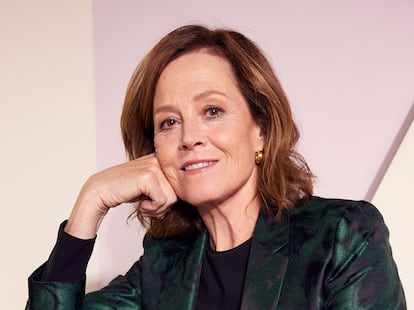
When Sigourney Weaver, 73, began studying theater at Yale, her professors told her she was not talented enough to make it professionally, a rejection that still stings after five decades of success. “Life will tell you quickly enough in this business whether or not you can make it, without your teachers discouraging you. It took me years to rebuild my confidence,” the Manhattan-born actress declared years later. Shortly after that rebuff, Weaver starred in Alien (1979). She won the adoration of critics and audiences alike, which continues over 40 years later. She hasn’t stopped working since then; at an age when, according to Hollywood’s usual standards, she should be invisible, she has a full schedule. In 2022, she starred in writer and director Paul Schrader’s Master Gardener and in the blockbuster Avatar: The Way of Water, in which she played a peculiar role: a 14-year-old teenager.
That was about how old Susan Alexandra Weaver was when she decided that “Susan” was “too small” a name for someone whose parents took her to the doctor out of “fear that she wouldn’t stop growing.” Reading The Great Gatsby, she came across Mrs. Sigourney Howard, a name mentioned only once in the novel, but one that suited her well for the person she was beginning to become. The school protested. Her parents did not; they themselves were known by names other than the ones on their birth certificates. His father, Sylvester “Pat” Weaver, was president of NBC in the mid-1950s and created two legendary shows that continue to anchor the network, Today and The Tonight Show. Her mother, Elizabeth Inglis, was a British actress who worked with director Alfred Hitchcock. In case Sigourney was just a phase, they decided to call her “S.” Weaver herself thought it was only temporary; she never imagined that a few years later the name would no longer refer to the Fitzgerald character but to her alone.
Thinking that she wanted to be a writer rather than an actress, she enrolled at Yale, the university with the best theater department. There, she met a promising student, Meryl Streep. They could not have been more different: Streep was already Streep before she stepped on a stage — blonde, radiant, tenacious and perfectly integrated into the environment. She fit any role. Sigourney, on the other hand, was atypical and quirky; she lived in a tree house, dressed in elfin clothes and played the flute with her boyfriend. “It was the 70s, you know — flower power!” She liked theater, but film was another story. At nearly six feet tall, her height posed a ridiculous but real handicap. “Producers are short, I’m tall — I’m not the average producer’s sexual fantasy,” she told The Guardian.
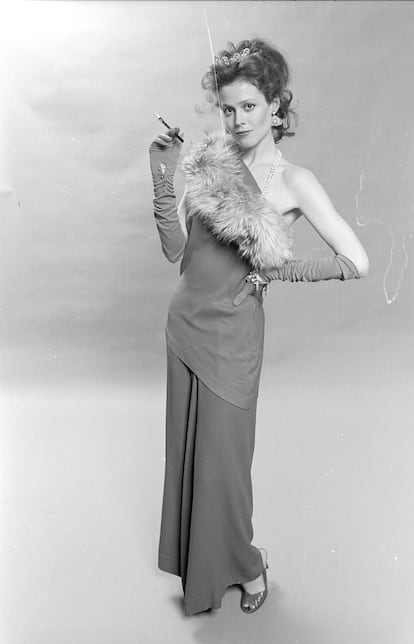
Years later, after Weaver became a star, spotting her debut in Annie Hall (1977) became something of a moviegoer’s Where’s Wally (hint: she appears just six seconds outside a movie theater next to Woody Allen). Audiences discovered her in a big way in Alien, but it wasn’t a straightforward process. Although playing the role of Ripley changed her life, she initially turned the part down. “I didn’t want to do it. It was sci-fi, and I was a total snob — I wanted to do Mike Nichols, Woody Allen, Shakespeare, and that’s about it.” The role was a gem, a rare case in which the script did not specify the characters’ gender, leading the producers to consider a woman for the part of Ripley. Another advantage: nobody would expect a woman and an unknown to survive until the end. After seeing the xenomorph’s impressive designs, she accepted the role. To motivate herself, she imagined that she was performing an Off-Broadway play. “I decided, in this case, I was playing Henry V on Mars.”
It worked. Critics and audiences agreed that the film was a success, and it broke box-office records and gave rise to a million-dollar franchise. While she was only paid $30,000 for Alien, Weaver earned $11 million for the fourth installment, Alien: Resurrection (1997), the equivalent of the first movie’s entire budget. The fact that Ripley could be played by a man or a woman doesn’t seem relevant to her, only logical. “I always said to writers that the secret to writing any woman character is to just write the character. Think of her as a man, and then don’t change a word. Have a woman play her. Don’t make any kind of strange scenes where she suddenly collapses into tears because, ‘Oh we have to make her sympathetic,’” she told The Hollywood Reporter.
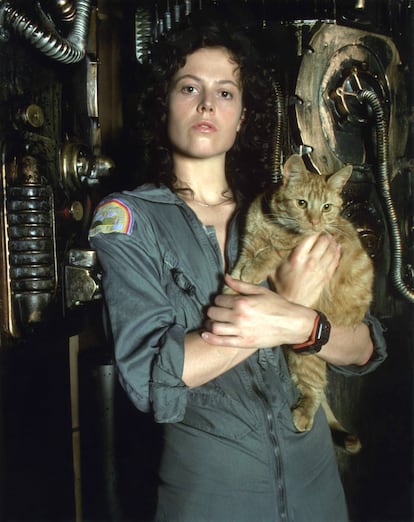
If Weaver hesitated before signing onto the first Alien, she wasn’t sure about participating in the sequel, either. The whole team doubted the shy, young Canadian director, James Cameron. No one had seen Terminator, and it was long before his self-proclaimed “king of the world” in Titanic. But Aliens succeeded at the box office and with critics and brought Weaver her first Oscar nomination, an unusual feat for a genre film. Ripley was already a symbol; because Hollywood had forgotten the pioneers who had popularized action films, women wielding a weapon were residual (their presence was reduced to some Westerns and blaxploitation). Weaver opened the door through which later Lara Croft, Katniss Everdeen and Imperator Furiosa entered.
In any case, she did not enjoy working in film until she shot The Year of Living Dangerously (1982) with Peter Weir, a true story set in the political unrest of Indonesia in the 1960s. Weaver starred alongside Linda Hunt and Mel Gibson, with whom she had a torrid on-screen romance. Like almost all actors, Gibson is shorter than she is, yet “when we went to the opening in Los Angeles, he encouraged me to wear the highest heels I could.” She appreciates that gesture because she’s accustomed to many men sitting down when she enters a room so that they aren’t seen standing next to her.
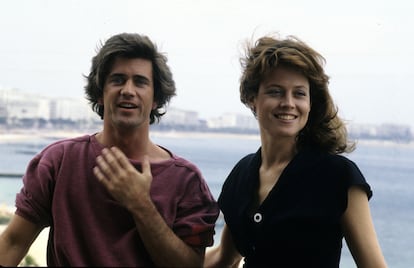
1988 was the most important year of Weaver’s career. That year, she received two Oscar nominations. One was for lead actress in Gorillas in the Mist, the story of primatologist Dian Fossey, who was murdered by poachers after an intense fight for gorilla rights. The movie positioned Weaver as a top star. The experience also awakened her environmental conscience; since then, she has served as honorary president of the Dian Fossey Gorilla Fund. She received the second Oscar nomination that year for playing the conceited Katharine Parker in the classic comedy Working Girl. Comedy is the terrain on which Weaver feels most comfortable. Subsequently, she has had the opportunity to demonstrate her comedic chops in a few films. In Ghostbusters, the formal Dana Barrett was the perfect counterpoint for the anarchic characters played by Bill Murray and Rick Moranis. She also showed off her comic talent in lower-profile projects like the hilarious Jeffrey (1995), the first gay comedy about AIDS in which she played a relentless self-help guru; Heartbreakers (2001), in which she formed a dream trio with Anne Bancroft and Ray Liotta; and especially the cult classic Galaxy Quest (1999).
Weaver’s versatility as an actress is demonstrated by the fact that the same year she filmed the crazy Galaxy Quest, she also starred in the devastating A Map of the World, the story of a woman whose best friend’s daughter dies under her care. She says that, more than any other movie, she wishes that more people had seen that film. She worked with Roman Polanski in Death and the Maiden (1994); in it, she played a political prisoner who, decades later, meets the man who tortured and raped her during a fascist dictatorship in an undetermined South American country. “It probably wasn’t until I did Death and the Maiden that I felt really confident as an actor,” she says. Weaver has no qualms about admitting that she would work with Polanski again. She did not join the wave of revisionism that affected directors like him and Woody Allen. Although she is aware of Hollywood sexism, she is one of the few actresses who does not have a terrible #MeToo story. As she told The Hollywood Reporter, “I made Alien, which was basically my first film, and no one came near me. They were so afraid I’d yank out a flamethrower, and I think I was already too old for them to take advantage of me.”
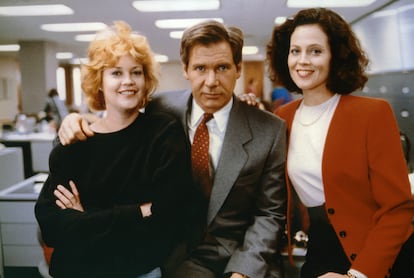
Her private life is of little interest to the press. She has been married to writer-director Jim Simpson for 40 years and has one daughter. Contrary to the unwritten rule that interesting characters stop being written for women after a certain age — the movies get made, but the audience doesn’t see them — she has never had trouble finding roles. Her career has never gone on hiatus; she has never needed to make a comeback because she hasn’t gone anywhere. She’s been around for nearly five decades in theater, television and film, partly because of how she’s approached her career. “I don’t want to sit in an ivory tower, waiting for my big movie to come up once every five years. That’s so boring… I want to be out there, working with different generations. That’s what’s always been so fun about it.” Of her role in the Avatar franchise — which required spending hours submerged in tanks to learn how to keep her eyes and mouth open underwater — she explained, “I didn’t want anyone to think, ‘Oh, she’s old, she can’t do this.’”
Weaver knows that characters older than 70 are not common in film. “I might be the oldest person on set,” she has joked. But she has no problem with her face showing her age. “I like getting older — it’s interesting. I don’t think it’s attractive to have a taut face with a 65-year-old’s body. I find that look scary. My mother was a great beauty and never succumbed to plastic surgery. She thought it was best to grow old gracefully. I feel the same. We change ourselves by looking back and trying to stay young instead of moving forward.”
Sign up for our weekly newsletter to get more English-language news coverage from EL PAÍS USA Edition
Tu suscripción se está usando en otro dispositivo
¿Quieres añadir otro usuario a tu suscripción?
Si continúas leyendo en este dispositivo, no se podrá leer en el otro.
FlechaTu suscripción se está usando en otro dispositivo y solo puedes acceder a EL PAÍS desde un dispositivo a la vez.
Si quieres compartir tu cuenta, cambia tu suscripción a la modalidad Premium, así podrás añadir otro usuario. Cada uno accederá con su propia cuenta de email, lo que os permitirá personalizar vuestra experiencia en EL PAÍS.
¿Tienes una suscripción de empresa? Accede aquí para contratar más cuentas.
En el caso de no saber quién está usando tu cuenta, te recomendamos cambiar tu contraseña aquí.
Si decides continuar compartiendo tu cuenta, este mensaje se mostrará en tu dispositivo y en el de la otra persona que está usando tu cuenta de forma indefinida, afectando a tu experiencia de lectura. Puedes consultar aquí los términos y condiciones de la suscripción digital.

